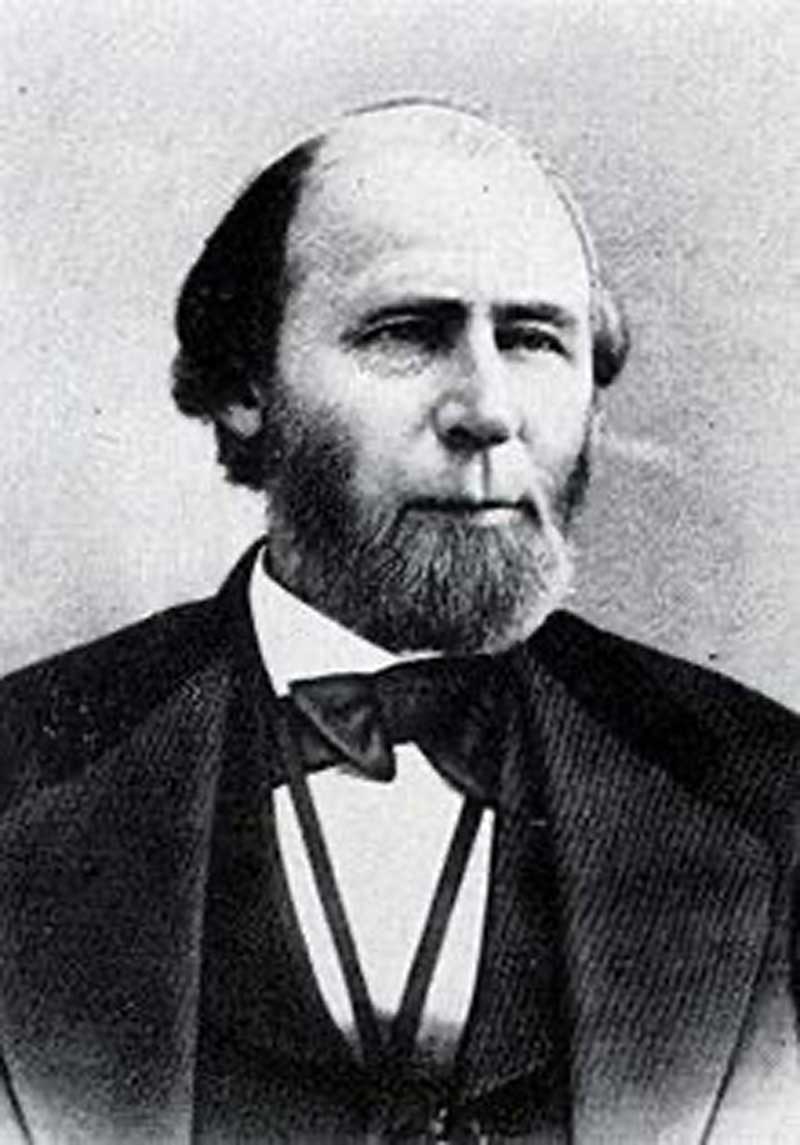
Reconstruction and the Birth of the Union League - Part 2 of a Series on Reconstruction
By the November1862 elections, many in the North had been demoralized by Confederate victories in the field, and pro-States Rights Northern Democrats made substantial political gains in six Northern states. This was followed by the humiliating defeat of Union forces by Confederate troops at Fredericksburg, Virginia, ending on December 15. A second humiliating defeat occurred at Chancellorsville in Virginia, ending on May 6 1863, in which Stonewall Jackson and Robert E. Lee routed Union forces under Joe Hooker. Many Republicans felt that the success of Union war policies and efforts were threatened by these political and military reverses. As a response, Union Clubs were formed in almost every town to support the war, the troops, and the Republican Party. These became the Union League of America.
However, the fortunes of war turned at Gettysburg in Pennsylvania and at Vicksburg on the Mississippi in July 1863. These victories and overwhelming Union superiority in manpower, weapons, industrial might, and financial resources took their relentless toll on the Confederacy’s ability to defend against continued Northern onslaught. Many also attribute the Union victory to Union gunboat control of the rivers and the Union Navy’s tightening blockade of Southern ports. The last real hope for Southern victory was British intervention to protect its considerable commercial interests in profitable free trade in Southern cotton. This never materialized but came closer than most people realize in November 1861, when the Union warship Jan Jacinto removed two Confederate diplomats heading for London on the British RMS Trenton. The Emancipation Proclamation of January 1863 actually freed no slaves under Union control and was primarily a diplomatic measure to keep the anti-slavery British from direct support of the Confederates. Lincoln also admitted that it was an important military strategy to cause chaos in the South. As the war was ending, Union League Clubs were also formed by Union loyalists in the South. There were also known as the Loyal League and became political and military arms of the Reconstruction state governments.
Southern Union Leagues were formed to assure the continued electoral success of carpetbagger Republican governments. Unless the Republican Party could overturn Southern Democrat control of the South, the Republicans could never sustain a national Republican majority. Union League militias in the South were usually led by former Union officers, but the rank and file soon consisted of former black Union soldiers and former slaves. Some estimate the number in ten of 13 Southern states to be 250,000, with North Carolina Governor William Holden controlling 80,000. These militias terrorized blacks and whites opposing Republican candidates. Little remembered by politically correct historians today, the Union League preceded the Ku Klux Klan in time and exceeded them in numbers and violence.
Most people today know something about the Ku Klux Klan, but very few are familiar with the Union League of America, also called the Loyal League. Yet the Union League perpetrated far more violence against both blacks and whites in the post Civil War Reconstruction years of 1865 to 1877 than the Klan ever has. The birth of the Klan was in fact a response to Union League bullying, violence, and murder. Why has the Union League been shoved into the memory hole of history? It is because the Union League was essentially a federal agency carrying out the policies of Reconstruction. The memory of such political despotism, corruption, and violence is just too embarrassing not to hide. This is even truer in today’s hysterical political correctitude that chains modern academics to narrow bounds of subject, reasoning, and speech, and forbids any contradiction to fashionable but false historical narratives.
Radical Republican leaders in Washington realized during the war that if the South came back into the Union with Democrat Congressmen, the Republicans would lose the political dominance they had enjoyed since the 1860 election. This is why the Radical Republicans in Congress wanted to shove Lincoln’s replacement, Andrew Johnson, aside. Johnson was a former Democrat, a constitutional conservative still sympathetic to States Rights, and committed to following Lincoln’s lenient ideas about reconstructing the South. He was also incorruptible. They wanted control of Reconstruction. Their goal was first to punish and humiliate the South, and then to remake it into a powerful political tool for permanent national dominance by a Republican Party tightly controlled by a small but ruthless faction. The core leaders of that faction were self-identified Radical Republicans Thaddeus Stevens, Charles Sumner, Edwin Stanton, Benjamin Wade, and Benjamin “Beast” Butler.
These ruthless radicals believed the key to making the South solid Republican was the black vote. The March 1867 Reconstruction Act disenfranchised Confederate veterans in ten Southern and Border states. The Radical Republican Governor of Tennessee, the Rev. William G. “Parson” Brownlow had already disenfranchised Tennessee’s Confederate veterans. Thus 85% of the white vote in the South was eliminated. The Radical Republicans also thought it necessary to alienate blacks from white Southerners, Democrats, and especially their former masters. Previous to the war and especially immediately following the war, the relationships between former slaves and masters were cooperative and often affectionate. Most slaves in the South had been well treated, in many cases like family. The whites also appreciated the tremendous loyalty that most blacks had shown them during the war. The vast majority did not desert them during those hard times, and no Confederate Army in the field could have moved a mile without black wagon drivers and other logistical support. Southern blacks served the Confederate forces in many capacities. Some had proven their loyalty and combat effectiveness in Confederate infantry and cavalry regiments.
Union League meetings were conducted as a mystical secret society with secret rituals. Meetings were especially devoted to stirring up enmity between blacks and whites. A catechism written by Radical Republicans in Congress was used in Union League meetings to create an unreasonable sense of entitlement, grievance, and resentment. They were taught that Northern Republican whites were their friends and allies and that white Southerners and Democrats were enemies to be hated and despised. They were frequently promised that they would receive land and livestock confiscated from the whites. With the coming of Radical Reconstruction and martial law that Southerners felt left them defenseless and without legal recourse, the role of the Union League became more aggressive. Many Southern men also feared for the safety of their wives and children. This led to a number of violent racial incidents. Such racial incidents were frequently used by carpetbagger governments to demonstrate to Washington and the Northern press and public the continued need for Southern Reconstruction. Other promises were in the form of threats of a death penalty by hanging to any black who betrayed the League by voting Democrat.
The primary role of the Union League was now to keep the corrupt carpetbagger governments in power. This included suppression of competing carpetbagger factions.
In order to make sure that all blacks voted Republican, the Union League bullied and beat other blacks into submission. Even flogging with the lash was used. If that did not work, they sometimes exacted the death penalty, frequently by lynching. In order to intimidate whites from seeking power or influencing black voting, they conducted terror campaigns. Barns and sometimes houses of whites were burned. In some cases small towns were burned as in Warren and Hamburg, Arkansas. Men, women, and children were killed in raids on “insurrectionary” communities and counties. Their deaths were reported as “killed trying to escape.”
There were Union League barn burnings and other destruction in every North Carolina County. During a single week of 1869 in Gaston County, North Carolina, nine barns were burned. In two months of the same year in Edgecombe County, two churches, several cotton gins, a cotton factory, and many barns and homes were burned. The Raleigh Sentinel reported on August 29th of the same year that ten Federal Army companies associated with the Union League had terrorized the Goldsboro area and committed violent depredations of all sorts. It reported the actions of the troops “so violent that it was unsafe for women to leave their homes.” This was all part of the Reconstruction mandate to remake the South.









 Mike Scruggs is the author of two books: The Un-Civil War: Shattering the Historical Myths; and Lessons from the Vietnam War: Truths the Media Never Told You, and over 600 articles on military history, national security, intelligent design, genealogical genetics, immigration, current political affairs, Islam, and the Middle East.
Mike Scruggs is the author of two books: The Un-Civil War: Shattering the Historical Myths; and Lessons from the Vietnam War: Truths the Media Never Told You, and over 600 articles on military history, national security, intelligent design, genealogical genetics, immigration, current political affairs, Islam, and the Middle East. 


